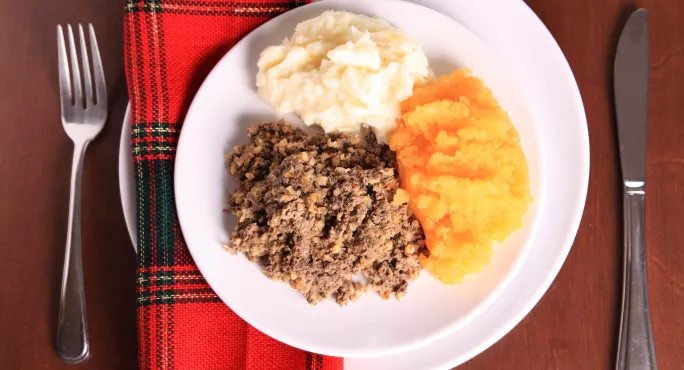This is your week for celebrating Robert Burns in schools, with his birthday coming up on Saturday. Burns suppers are traditionally held in his memory, and many schools in Scotland (and beyond) like to get in on the act.
Here are six tips to help you:
Burns night: Food
Traditionally, this is haggis, neeps (turnip/swede) and tatties (potato). It’s a great opportunity to involve a class in some food preparation or maybe even a life-skills lesson for which they buy the produce. You’d then have some great maths lessons in there, looking at measurement of ingredients and fractions around portion control.
The options of haggis are really good nowadays, too, with gluten-free, veggie alternatives available. Within a specialist education environment, where restricted diets are common, look at alternatives the children might eat - you can even buy haggis-flavoured crisps. But for drinks it has to be Irn Bru.
Music
You obviously want some sort of Scottish music at your Burns supper. Many retired pipers will be more than happy to play at school events. There is also more contemporary Scottish music available for free on YouTube.
Robert Burns: He still resonates in schools, all these years later
Scots language: Nurturing Scots in the next generation
Not just on Burns Night: ‘Scots language should be part of everyday teaching’
Dress code
It’s a bit of fun but you have to have some tartan in there. Over the years I’ve worn a kilt, tartan tie, tartan waistcoat and even a tartan bunnet to a Burns supper - the pupils are always curious to see what I’m wearing. Cost-effective and fun option for pupils could include designing a tartan badge to wear.
Decorations
Tartan placemats designed by pupils is an ideal splash of colour, but you can also go bigger and make tartan bunting to span the length and breadth of your dining area. This looks impressive but can be made very easily.
Poetry
It wouldn’t be a celebration of Burns without having some poetry, and there is an awful lot to choose from his oeuvre alone. Unpicking Scots language can be difficult for Scottish children, never mind pupils from other parts of the UK and beyond, so there is a lot of learning involved. I think it’s good to teach pupils Auld Lang Syne, because it’s known internationally and they will encounter it - at the very least - every Hogmanay.
Enjoy it
It’s nice to give our pupils little experiences like this - these are the things they will remember about school years from now.
And if you do organise a Burns supper or any Burns-related events this week, remember the words of the man himself: “It’s guid to be merry and wise.”
Adam Black is a teacher in Scotland




